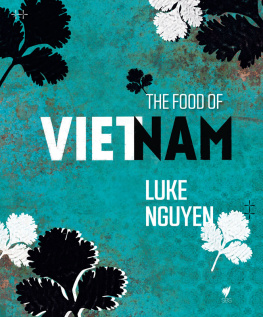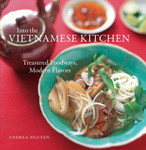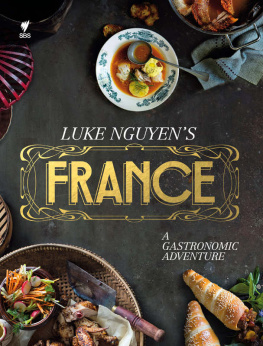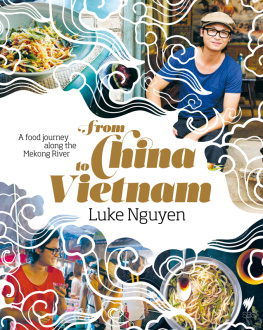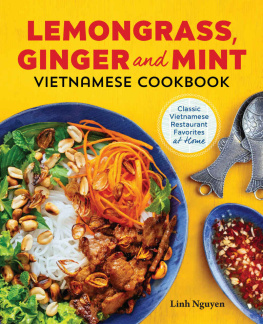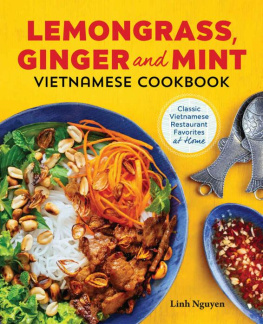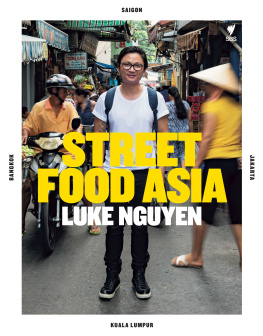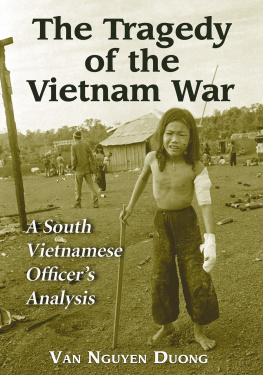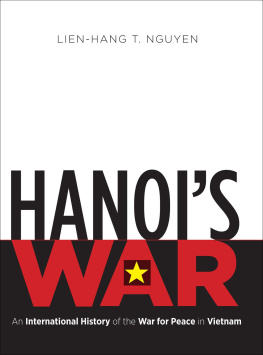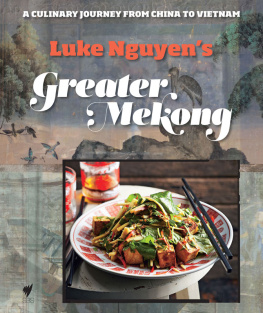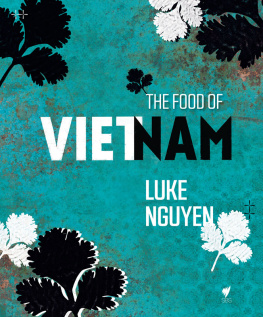I dedicate this book to all the wonderful street vendors, home cooks and chefs I had the pleasure of meeting and cooking with throughout Vietnam.
Thank you for sharing your stories and family recipes with me.
This book would not have been possible without the great work of some very special and extremely talented people, who all make up the Dream Team: Alan Benson, Suzanna Boyd, Leanne Kitchen, Michelle Noerianto, Sarah Hobbs, Chris Nair, Sarah Odgers and Katri Hilden.
A big thank you to all the crew at Hardie Grant who are such a pleasure to work with: Paul McNally, Lucy Heaver and Roxy Ryan.

Growing up in Australia, food was an intrinsic link to my Vietnamese heritage and culture. Everything Vietnamese Id learnt as a child was passed on to me through the memories and knowledge of my parents, and the other families in my Vietnamese community. They shared these gifts with us, within our own little Vietnam in the Sydney suburb of Cabramatta. Our lifestyle, cooking and language were a version of our parents own upbringing.
Through all this, I was inspired to go to Vietnam. I felt a pull to discover the country and people on my own, and to hopefully understand more about the lives of my parents and my own life in Australia. But first I needed to follow the strongest of my passions my dream of opening my own restaurant, where I could showcase traditional Vietnamese food within the contemporary Sydney dining scene. My restaurant, Red Lantern, is more than a restaurant to me. It has been my dream fulfilled, but it has also taken me beyond my dreams and around the world, to expand my life and love of food and culture far more than I ever could have asked for.
It brought to me Vietnam, where my journey to further understand my heritage, history and culture still continues, years later. Heavily schooled in southern cuisine, I wanted to learn about the countrys regional specialties, travelling not only to particular spots to visit my family, but also to areas where I had no relatives, links or knowledge: a discovery for the soul and the stomach!
In this book I begin my culinary discovery in southern Vietnam, where I trace my extended family. I meet my mothers sisters Aunties Eight and Nine, who show me where they, and my Mum, were brought up. After sharing their favourite family recipes and street-food spots, they introduce me to my cousins from the Mekong Delta.
Meeting my huge family who live along the mighty Mekong River was truly life-changing. I relish their river lifestyle, and remember this experience so fondly; it is the first time that I have felt such a connection to the land catching our own fish, prawns (shrimp), bush rats and snakes, and harvesting our own rice, herbs and vegetables. Growing our own food, knowing the smell of rain moving closer, raking the water to retrieve our catch, nurturing the livestock and plants all these things made every plate of food we ate together ever so rewarding, and at the same time made me appreciate the interplay of generations of people, animal and plants.
Returning to Vietnam coincided with a period of change and development throughout the country. Vietnam had recently opened its doors to the global market, and international trade and business flooded in. The traditional and sometimes ancient ways of life farming, producing, cooking, selling were now being challenged to stay relevant, or be updated to suit the modern, developing world.
I am fascinated and in awe of the deftness the people display in much of their daily work skills and knowledge handed down from generations before. Literally hundreds of years of knowledge accumulate through each person, and Im conscious how lucky I was to be experiencing and recording practices that may well be lost to future generations.
Later I visit the fishing folk of Mui Ne, who work the ocean waters by night, and in the early mornings prepare tonnes of seafood by hand, expertly cutting, slicing, drying and packing their catch for sale right along the beachfront. In the quiet fishing town of Quy Nhon, I learn the ancient art of handmaking tofu, and visit the famous Thien Huong Pagoda, where I am taught age-old vegetarian dishes, before being blessed by the pagodas revered Buddhist monk.
The terrace fields of Da Lat, filled with exotic vegetables, local flowers and herbs, reflect the colonial influences of the French, who introduced the coffee plantations that now flourish under local hands, and satisfy the countrys own huge appetite for coffee drinking, their coffee also exported around the world.
This first journey through Vietnam taught me so much, and Im still learning something new every day. A lifetime of travelling, talking and eating throughout the country may not be enough to discover all that Vietnam has to share, but the peoples stories and their memories are all in some way tied up in any single dish that is prepared; each technique is the word and practice of someone before them. I love to listen and watch as knowledge, history and culture is told through the form of food.
Each place I visit, I meet people who are hospitable, welcoming and sharing. The Vietnamese never miss an opportunity to have a laugh. Their ability to make fun of themselves is the key to their resilience.
Ho Chi Minh City, once known as Saigon, is Vietnams largest city. It lies along the Saigon River, some 80 kilometres (50 miles) from the South China Sea. With 9 million people and over 6 million motorbikes, this bustling, chaotic, cosmopolitan city always fills me with so much excitement and energy.
I head directly to Ben Thanh Market, a must-see for any visitor. Built by the French in 1912, it is surely Saigons most colourful and vibrant market and has everything you need, from fabrics and cooking gear to souvenirs, dry goods and fake Gucci bags. But Im here specifically for the street food and fresh produce, and to cook one of Saigons most loved dishes: Canh chua ca, a tamarind and pineapple soup with fish, okra, tomato, elephant ear stems and fresh herbs.
Im blown away by how fresh and cheap everything is. Pineapples, three for $1; tomatoes, 50 cents a kilo; herbs, a ridiculous 10 cents a bunch! With a spring in my step I move on to the seafood section, where most species are still kicking. Vietnamese love their produce super-fresh alive where possible. My soup calls for mudfish, a fatty freshwater fish with great texture. The elderly lady selling them has no teeth and a great big smile, so I am drawn to her. She scales the big fish and chops it into thick cutlets, bone on. It costs $3 a bargain!
Finding the soup ingredients is easy, but the market is so busy it takes two hours to find a spot where we are not in anyones way. The soup-making takes five hours to film, with locals demanding I make enough for them to all have a taste (youll find a similar ).
One of the locals tells me of a street-food dish I have to try. The only details she gives are: Its on Hai Ba Trung in District 1, just past Dien Bien Phu Street. She makes the best green papaya salad in town! So off I go in search of the Green Papaya Lady but Hai Ba Trung is one of the longest streets in Saigon, so Im not going to get my hopes up. As I pass Dien Bien Phu, I notice motorbikes pulling to the kerbside, all lined up in front of a cart with a cabinet filled with shredded green papaya. This has to be her!

